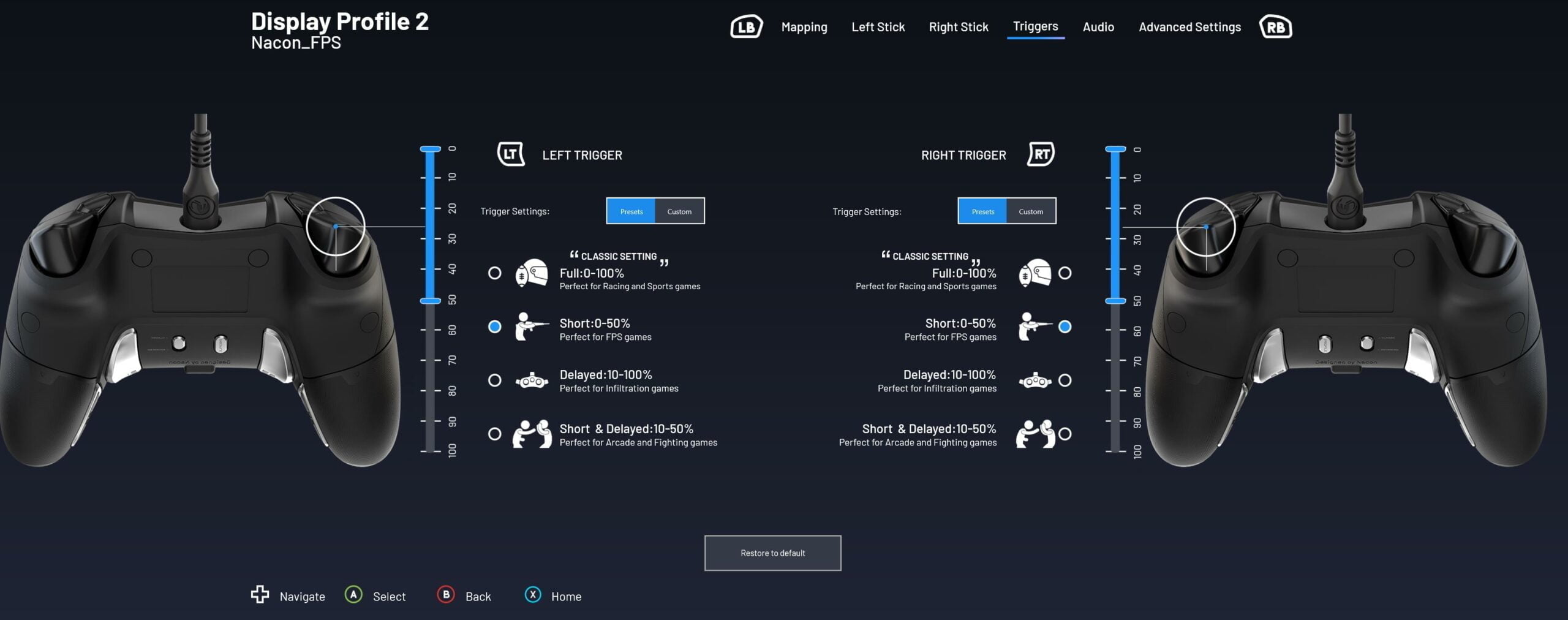

This is my favourite implementation of customisable back-buttons yet, with me generally using them as macros of R3 and 元, allowing for quick buttons presses for melee attacks and sprinting that don’t cause issues with my aim or movement. What results is the ability to leave your fingers in one place, while having 4 distinctive buttons that can be easily and quickly pressed without confusion or accidentally hitting the wrong one. To do this, the buttons follow the curve along the hand-holds of the controller, allowing for a raised section that can be ‘pushed’ as one set of buttons and a flat section that can be ‘pulled’ as the other. Unlike other controllers which have implemented a paddle system for their additional buttons, the Revolution Pro sports two buttons on either side of the controller that can be hit in two different areas to create 4 customisable buttons. I’ve now spent quite some time running, gunning, racing and fighting with my Nacon Revolution Pro and I have been impressed by the solid build quality and range of customisation options that it brings to the table.įor those who haven’t seen or heard of the Revolution Pro before, it’s a wired PlayStation 4 controller that sports a non-gated d-pad, displaced analog sticks and 4 customisable buttons on the backside of the controller. Instead of doing just that, Sony instead announced that they had licensed both Razer and Nacon to create their own elite controllers for the PlayStation 4. With the Xbox One now sporting a fancy elite controller, players began wondering when Sony would follow suit with their own elite controller for the PlayStation 4.

In the past, the only way to get customisable controllers was to go through companies like Scuf Gaming, who physically altered and customised official controllers, but these weren’t readily available in stores. With the creation of the Xbox One Elite Controller, Microsoft brought the world of high quality, customisable controllers to the mainstream market.


 0 kommentar(er)
0 kommentar(er)
